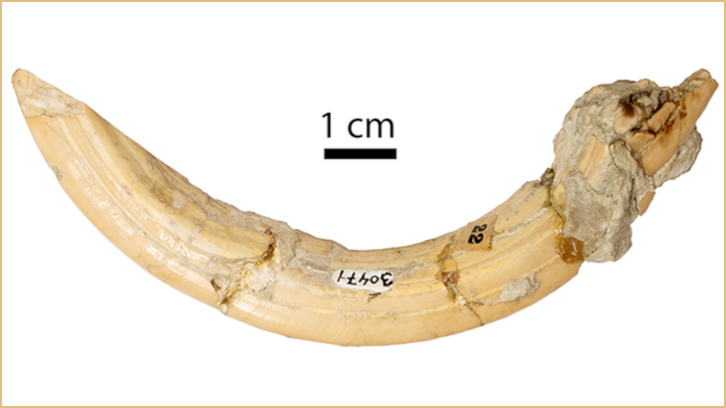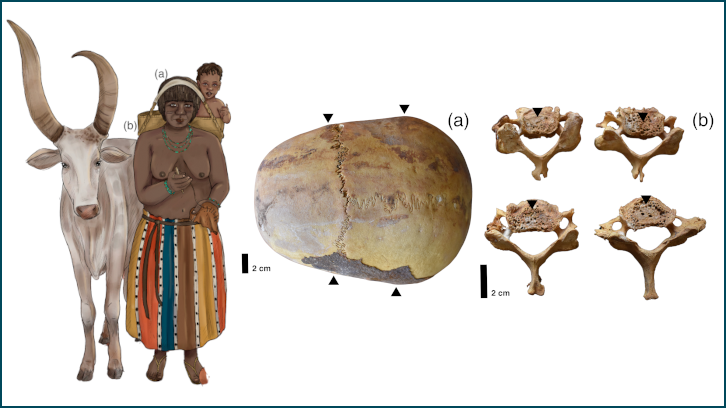The resurrection of the tetraconodont pig from Sant Quirze

The recent description of tetraconodont pig remains from the Late Miocene of Sant Quirze confirms the distinctiveness of a species described more than a hundred years ago, which had remained unnoticed until recently. The study shows the uncertain kinship relationships with other species of tetraconodontine suids from the Miocene of Europe but suggests that two lineages of this suid subfamily might have independently acquired similar dental proportions.
In 1882, the pig species Sus valentini was described by paleontologist Henri Filhol based on a partial cranium from the Valentine Quarry in Saint-Gaudens (France). However, since 1900 and for more than a century, the specimen was never mentioned again in the literature, and the name was synonymized with other species and eventually fell into oblivion. It was not until a decade ago that paleontologist Martin Pickford found the fossil (mislabeled as from another site) in the Muséum national d'Histoire naturelle in Paris. He realized that it belonged to a tetraconodontine species that had gone unnoticed throughout the 20th Century and, hence, resurrected Filhol’s species as Parachleuastochoerus valentini. Tetraconodontines are an extinct subfamily of suids (pigs and their close relatives) that throve across Eurasia and Africa during the Miocene and whose phylogenetic (kinship) relationships are not well known. According to Pickford, Pa. valentini would be recorded across Europe approximately between 12 and 10 Ma (million years ago), being particularly well represented at the site of Trinxera del Ferrocarril in Sant Quirze del Vallès (11.6–11.2 Ma). However, other suid specialists have questioned the distinctiveness of the species and considered it a synonym of Conohyus simorrensis.
During the last few years, a team from the Institut Català de Paleontologia Miquel Crusafont (ICP) has published multiple studies about suids from Catalonia that tentatively supported Pickford’s views about Pa. valentini. However, some key pieces of this puzzle were missing, including some tooth positions (such as the lower male canines) that are particularly informative. In a recent paper published in the Swiss Journal of Paleontology, David Alba and coauthors describe the whole tetraconodontine sample from Trinxera del Ferrocarril (which remained largely unpublished) to clarify the validity and relationships of this species. This site was discovered during the early 1920s due to the excavation of the railway trench and some of the fossils were already published by Josep Ramon Bataller, from the Museu Geològic del Seminari de Barcelona (MGSB), in 1924. During subsequent decades, fossils were collected by amateur collector Màrius Guérin (being subsequently donated to the MGSB after his death in 1968), as well as by paleontologist Miquel Crusafont (the ‘father’ of the Catalan school of vertebrate paleontology). Pickford could only study the latter remains, housed in the ICP, whereas the recent study reports many unpublished remains, housed for decades in the MGSB. Ironically, it turns out that the canines of Pa. valentini had already been published by Bataller in 1924, being misattributed to another suid.
The study published by the ICP conclusively shows that Pa. valentini differs in multiple dental features from C. simorrensis, including not only the reduced posterior premolars but also the lack of the distinctive lower male canine morphology of the latter species. Yet, the results of a phylogenetic analysis included in the paper indicate that, despite similar premolar proportions, Pa. valentini does not appear closely related to other species of Parachelaustochoerus. This somewhat unexpected twist of the story suggests that the posterior premolars were likely reduced independently along two different European tetraconodontine lineages, following their initial dispersal into this continent from Asia about 16 Ma. Further research will thus be required to determine the genus allocation of this species and clarify further the evolution of European tetraconodontines as a whole. This study further highlights the scientific importance of the paleontological heritage stored in natural history museums such as the MGSB. In this case, the study has been facilitated by a collaboration agreement between the ICP and the MGSB. By virtue of this agreement, ICP researchers commit to lead research based on the important collection of fossil vertebrate remains from the Miocene of Catalonia housed in the MGSB. God only knows what other surprises might be awaiting us in the old cabinets of the seminary museum…
Institut Català de Paleontologia Miquel Crusafont (ICP-CERCA)
Universitat Autònoma de Barcelona
References
Alba, D. M., Siarabi, S., Arranz, S. G., McKenzie, S., & Casanovas-Vilar, I. (2025). Dental remains of ‘Parachleuastochoerus’ valentini (Suidae: Tetraconodontinae) from the early Late Miocene of Sant Quirze (Vallès-Penedès Basin, NE Iberian Peninsula): Taxonomic and phylogenetic implications. Swiss Journal of Palaeontology, 144, 9. https://doi.org/10.1186/s13358-024-00344-3


